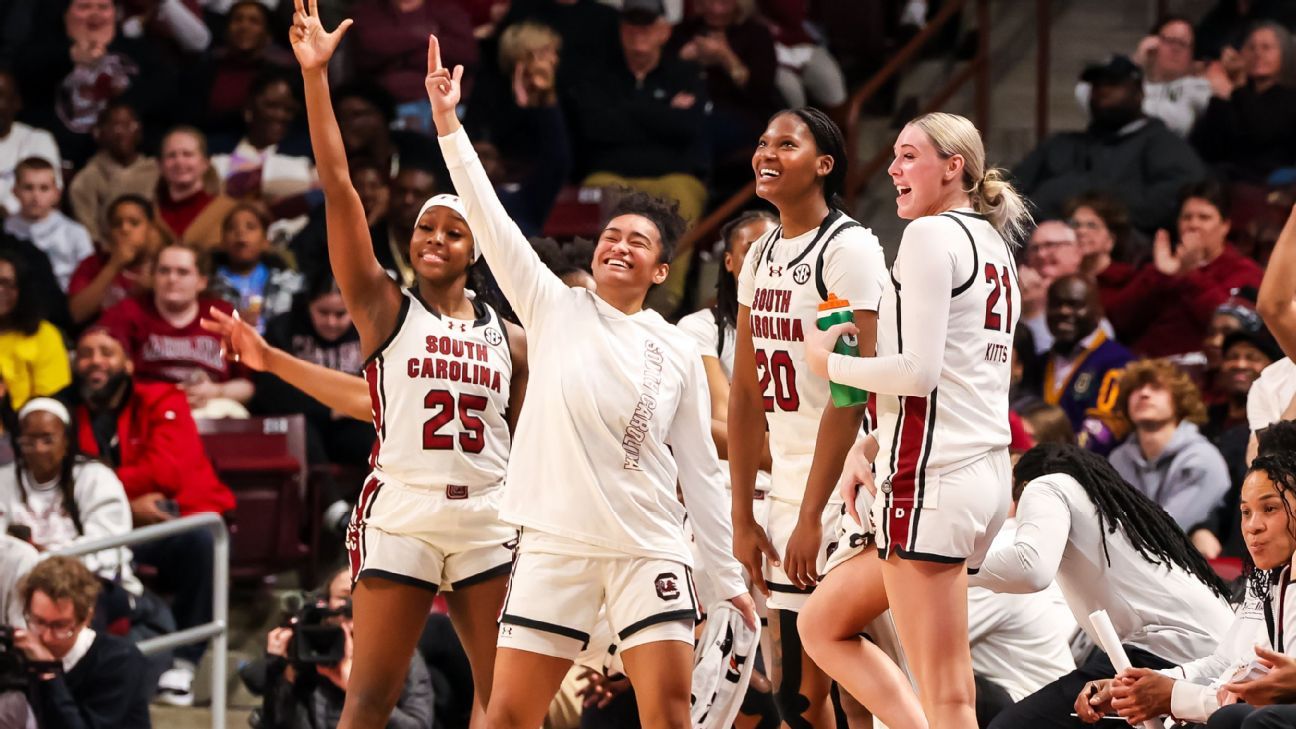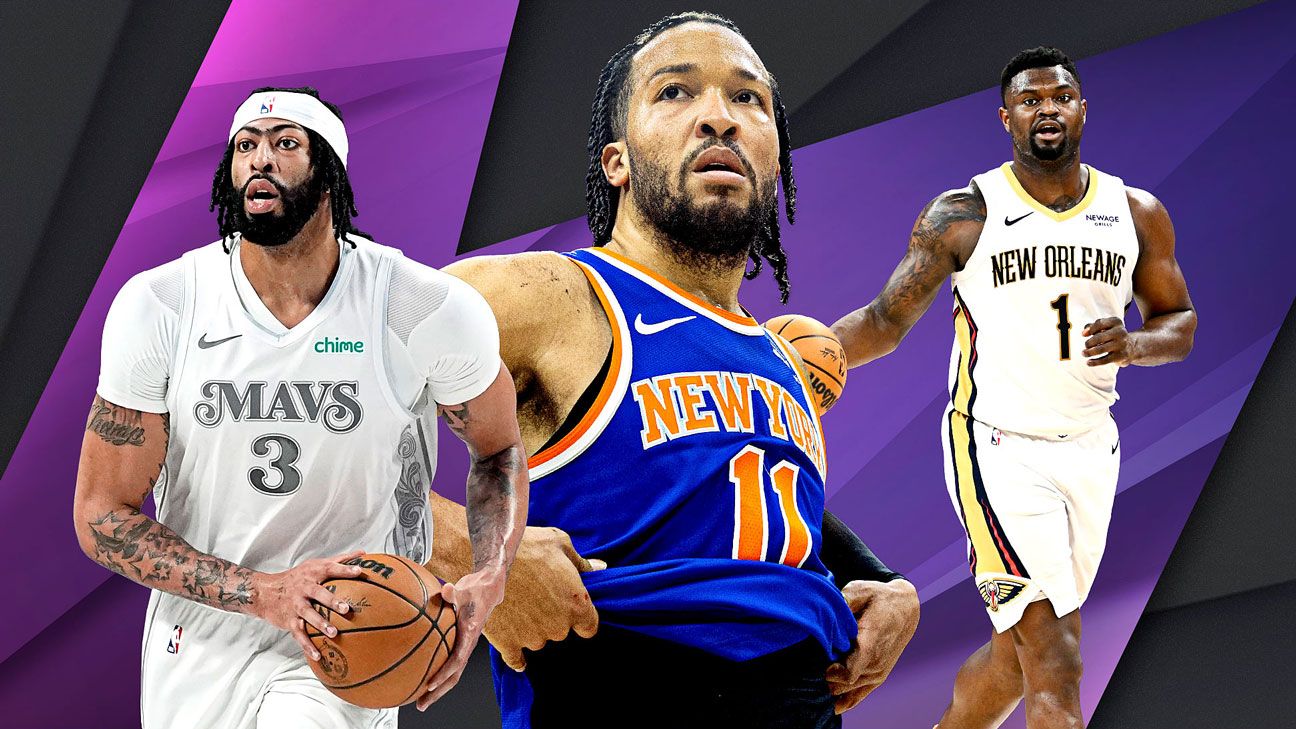Changing of the guard at TE and eight other takeaways from the 2024 fantasy football season
Tristan H. Cockcroft explains that despite a slow start, Ja’Marr Chase’s “statistical tear” could lead him to being the No. 1 overall fantasy draft pick in 2025. (1:06)
As we reflect upon the 2024 fantasy football season, we are asking our ESPN Fantasy writers to answer a few questions.
At the end of each season, it’s important to recognize trends and learn from what you experienced as a fantasy manager. Nine of our writers — Stephania Bell, Matt Bowen, Mike Clay, Tristan H. Cockcroft, Daniel Dopp, Eric Karabell, Liz Loza, Eric Moody and Field Yates — are here to help in that endeavor.
What is your biggest takeaway from the 2024 fantasy season?
Dopp: We officially had a changing of the guard at tight end
Gone are the days of Travis Kelce comfortably living atop the position. Young players such as Trey McBride and Brock Bowers clearly surpassed him in 2024. While Kelce had six top-three weekly finishes at the position this season, he also had 10 finishes outside the top 12. The talent is still there, but the consistency has faltered and likely won’t get better next season when Kelce turns 36. In his place, Bowers just put together the greatest rookie tight end season we’ve ever seen in fantasy football, and McBride’s third-year ascension of 111 receptions and 1,146 receiving yards has put fantasy managers on notice.
Loza: Don’t be ageist, particularly at the running back position
Some of this season’s most prolific producers were tried-and-true vets. In fact, seven of this year’s top 15 fantasy RBs in points per game were over the age of 25, and four of them were older than 27 (which is traditionally the age when primary ball carriers start to decline). Here’s the list of those over 25 years old, in order of overall fantasy points in 2024: Saquon Barkley (27), Derrick Henry (30), Alvin Kamara (29), Josh Jacobs (26), Joe Mixon (28), James Conner (29) and David Montgomery (27). These rushers — five of whom also ranked top 15 for total touches — proved that volume (not age) remains king.
Karabell: Treat highly drafted rookie QBs as potentially fantasy-relevant
This is especially true for QBs who add value running the football, and we should assume everyone starts at some point in Year 1. Washington’s Jayden Daniels was not a top-10 QB in most preseason drafts, and he was fantastic. Few considered Denver’s Bo Nix or New England’s Drake Maye on draft day. They mattered. Chicago’s Caleb Williams had his moments. Even Atlanta’s Michael Penix Jr. ended up starting and approached 25 fantasy points in Week 18.
Clay: Prioritize one of the ‘Big 5’ quarterbacks in 2025 drafts
There is a lot of parity at quarterback, but there are a handful who make a difference and are worth prioritizing. Lamar Jackson (25.3 PPG), Josh Allen (22.3), Joe Burrow (21.9), Jalen Hurts (21.0) and Daniels (20.9) form a clear “Big 5” tier at the position for 2025. The sixth spot is wide open and you could make a case for at least a dozen players. We’ll see how ADP plays out, but prioritizing one of these five signal-callers is likely to be one of my primary 2025 strategies.
Bowen: Coaching and offensive systems matter at the quarterback position
Baker Mayfield (21.5 PPG), Jared Goff (19.1) and Sam Darnold (18.1) were probably not on your draft board in 10-team leagues back in August. I get it. However, all three finished as top-10 QBs this season. That’s why we need to look at playcallers and offensive systems a little bit more in our draft prep. Mayfield, Goff and Darnold operate in QB-friendly systems that cater to their traits as throwers — play-action, defined concepts, shot plays. So, if you’re drafting a quarterback late, or even looking for that QB2 to stash on the bench, it’s important to take into account how the offensive system can maximize their skills.
Moody: Be more open to old faces in new places
This season showed us plenty of examples of free agents who delivered for the teams that brought them in. Running backs like Barkley, Henry, and Jacobs all thrived in their roles. Aaron Jones, J.K. Dobbins and Tony Pollard were also impactful. And don’t overlook non-RBs like Darnold, Jonnu Smith and Darnell Mooney. All of them turned out to be great values this season.
Cockcroft: Don’t waste time researching kickers and D/STs in the preseason
If the mindset was once “wait until the end to pick your kicker and defense,” we should amend it to “don’t even bother scrutinizing either.” In fact, if your league allows you to leave both spots vacant during the draft, only requiring that you pick up a starter by Week 1, do that. The top two kickers drafted this season on average (Harrison Butker, Justin Tucker) were disasters, and while we did see a record for fantasy points scored at the position, that came from a kicker from Pittsburgh (Chris Boswell) … and he ended up there despite registering a top-10 weekly score at the position only seven times all season (tied for sixth most among kickers). As far as defenses, the top two drafted (Cleveland Browns, Dallas Cowboys) placed outside the top 15 and the top two in scoring (Denver Broncos, Minnesota Vikings) were picked 20th and 23rd. You can — and absolutely should — take a streaming approach to both spots, but even if you do put thought into either pick, treat neither as set-it-and-forget-it options and be ready to swiftly cycle through them as streaks, byes and matchup opportunities dictate.
Bell: Don’t let generic ‘rules’ replace case-by-case analysis
It may seem obvious, yet we have numerous fantasy mantras that guide our decision-making (including me — we’re all guilty of it to some degree) that may not fit across the board. Specifically, the one that struck me most this season was the “too many mouths to feed to hold elite fantasy value” refrain. Some teams defy this rule and generate enough offensive power to render multiple players valuable in fantasy. Case in point: the Detroit Lions, who have two running backs (Gibbs, Montgomery) and multiple pass catchers (Amon-Ra St. Brown, Jameson Williams and, intermittently, Sam LaPorta) that fit the bill. There aren’t many clubs that can pull it off to this level — at least not consistently — but it is important for fantasy managers to not bypass unique opportunities in the draft process as the result of a so-called rule.
Yates: The golden era of wide receivers is here
While Ja’Marr Chase cruised to the triple crown of receiving, he’s not alone at the top of the wide receiver mountain. Going into next season, you could make arguments for any of the following players to be considered a top-five wideout: Chase, Justin Jefferson, Puka Nacua, St. Brown, CeeDee Lamb, Malik Nabers, Nico Collins, A.J. Brown, Brian Thomas Jr., and even a few others. There is emerging talent at the position, established veterans who still have great football left to play, and players already in their prime. What a time!




